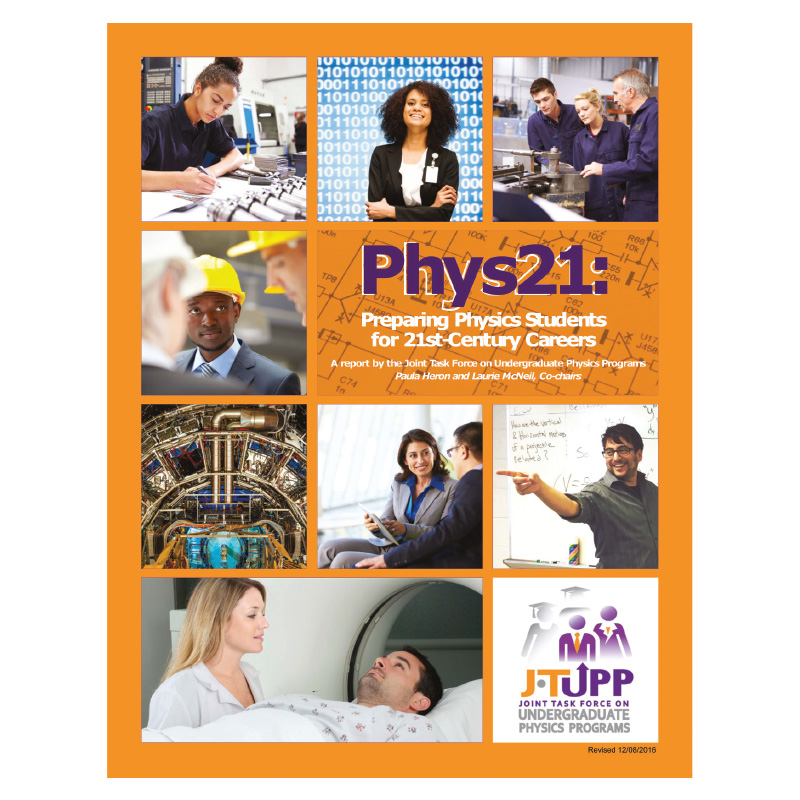Preparing Students for 21st Century Careers
Fall
2017
Unifying Fields
Preparing Students for 21st Century Careers
Kendra Redmond, Contributing Writer
 Physics students heading down the path to becoming professors, researchers, engineers, teachers, programmers, and other professionals in the modern age are entering a diverse and exciting employment landscape—a landscape that many feel unprepared to navigate.
Physics students heading down the path to becoming professors, researchers, engineers, teachers, programmers, and other professionals in the modern age are entering a diverse and exciting employment landscape—a landscape that many feel unprepared to navigate.
What skills and knowledge should the next generation of undergraduate physics degree holders possess to be well prepared for a diverse set of careers?
This is the question posed to the Joint Task Force on Undergraduate Physics Programs (J-TUPP), a group of leaders in physics academia, industry, and education that was convened in 2014 by the American Association of Physics Teachers and the American Physical Society and supported by the National Science Foundation.
J-TUPP tackled this question by synthesizing information from an array of reports and studies that address the career paths taken by physics bachelor’s degree recipients and the skills and knowledge valued by today’s employers. Their findings are detailed in a new report, Phys21: Preparing Physics Students for 21st Century Careers.
Aimed primarily at physics department leaders, the report compiles the knowledge, skills, and attitudes that graduates need for successful careers; learning goals that physics departments can adopt to promote their graduates’ success; and descriptions of ways that physics departments, professional societies, and funding agencies can ensure that those learning goals are being met. It also highlights why paying attention to career preparation is important in the first place—the ways in which doing so can enrich and diversify departments, empower students, and support local communities.
Phys21 doesn’t promote overhauling core physics content, rather, it suggests a variety of ways in which departments can intentionally incorporate skills like technical writing, project management, teamwork, and computer programming into existing courses while using industry-standard software. To this end, the report includes case studies of physics departments of different sizes and scopes already incorporating these skills into the major in various ways.
“To better prepare students in this way does not require that a department abandon the rigorous technical education that physicists take pride in,” write cochairs Paula Heron (University of Washington) and Laurie McNeil (University of North Carolina at Chapel Hill) in the report. “It does, however, require that physics faculty members become informed about the skills and knowledge valued by potential employers of their graduates, and that departments make appropriate modifications to curricular and cocurricular aspects of their programs.”
Phys21 and its case studies highlight several ways in which departments can work with alumni and local physicists to better prepare students for 21st century careers. If you are a Sigma Pi Sigma member interested in giving back to the physics community, perhaps one of these ideas will resonate with you:
- Volunteer to give a colloquium or informal talk to your local physics department or SPS chapter.
- Invite local departments to tour your place of work or attend relevant events on your campus.
- Recruit interns and recent graduates from among local physics departments.
- Check in with physics faculty members at your alma mater and let them know where your career has taken you, the skills your industry looks for in new hires, and how you’d like to support current students.
To learn more and download Phys21, visit http://www.compadre.org/jtupp/.
